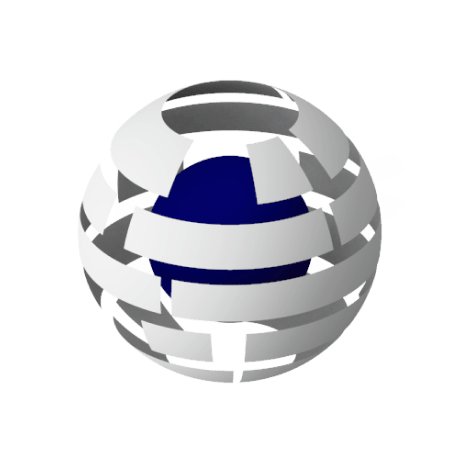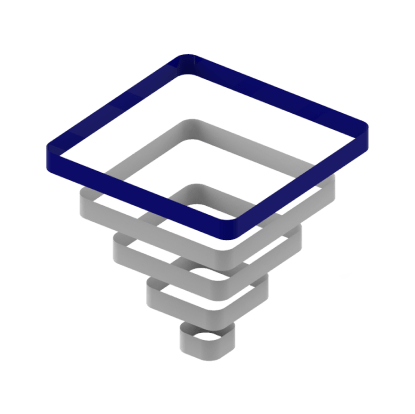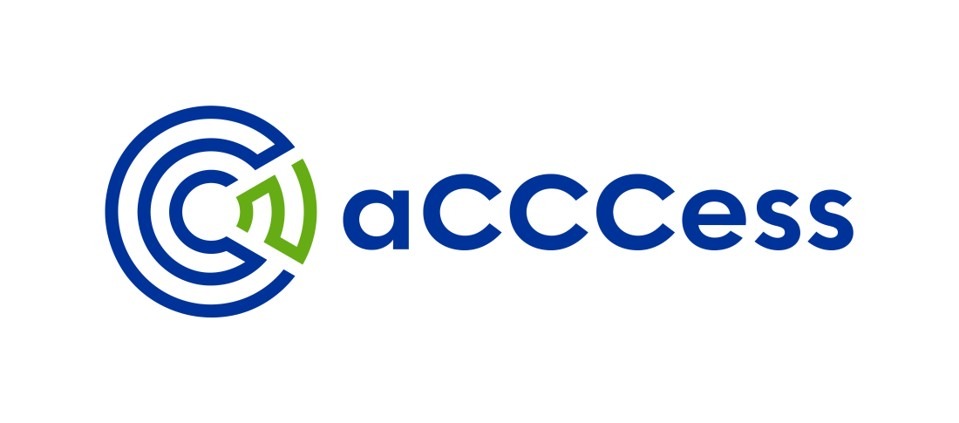Régis :
Good afternoon, everyone. Thank you for joining us this afternoon to talk a little bit about the CHIPS Venture Forum.
Today, the objective of this interactive session is to share more, of course, about the initiative itself, what is the process for you to apply, and we will answer all your questions, collect your feedback, and maybe address some specific requests.
This session is recorded, it will be made available on the ACCESS YouTube channel, and the slides will be distributed to attendees.
So I’m Régis Hamelin, I’m the CTO of BLUMORPHO, and I’m the coordinator of the ACCCESS Coordination and Support Action.
This afternoon with me, I have my colleague, Radia.
Radia :
Hi, hello everyone, happy to have you all.
Quick word about myself too, I’m Radia, Innovation Manager at BLUMORPHO, and I work alongside Régis on the ACCESS project.
I’ll be your main point of contact. Please don’t hesitate to reach out if you have any questions, you’ll find my contact details at the end of this webinar.
Before we dive in, just a quick reminder: you’re in an interactive webinar, so feel free to use the little Q&A box to ask your questions along the way. Don’t be shy, ask your hard questions and put our expertise to the test.
And just to show you how interactive we really are, we’d love for you to start by answering a quick poll.
Régis :
Yes, so I’m launching the poll. The question is very simple: are you a startup, scale-up, a cluster, a Competence Centre, a large corporate, or something else? Something else, maybe you don’t fit into any of these categories.
It’s important for us to understand who is in the room.
And we see that for the moment, nearly 75% of the people in the room are startups and scale-ups. So thank you very much for your participation.
Let’s get into it now. Let’s talk about the CHIPS Forum. What we discuss today takes place in the context of the European CHIPS Act.
As you all know, the European CHIPS Act is Europe’s strategic response to the global semiconductor challenge.
It has many objectives, but mostly, it aims at sovereignty and reinforcing a resilient and sustainable value chain.
This is why the ACCESS CSA, in partnership with the EIC and the European Commission and more specifically with DG CONNECT is bringing you this opportunity to meet with investors and corporates.
The objective of DG CONNECT for this initiative is to unlock access to financing beyond Series A.
And for the EIC, it’s also about supporting the EIC portfolio to get access to strategic and financial partners.
We’re going to talk a lot about venture capital investors, but this is not the only purpose of this forum it’s also an opportunity for you to meet with potential clients and large corporates.
Maybe a few words about the Competence Centres.
The Competence Centres are one of the pillars of DG CONNECT’s strategy, in the establishment of a European network. You have one Competence Centre in each Member State.
It’s actually a national innovation hotspot. They have a strategic role.
They serve as a link between advanced research and industrial deployment.
They are designed to accelerate semiconductor development by bringing together researchers and businesses.
The Competence Centres will focus first on small and medium-sized enterprises, and startups are obviously part of that.
There will also be technical support.
What are the services?
You will have technical support, technology transfer… the objective is also to facilitate access to pilot lines, design platforms, and entry.
What is this network?
You will see on this map that you have up to 30 Competence Centres in total.
You can maybe find your country and your Competence Centre.
If you don’t know who is in charge of your Competence Centre, contact us, that’s our job. As ACCCESS, our role is to connect the European Chips Competence Centres, so CCCs in short, the pilot lines, and the design platform, to build the European network of Chips Competence Centres.
So again, 30 Competence Centres, with two in Spain and two in Belgium.
A few words about ACCCESS: we are a Coordination and Support Action. We have seven partners.
BLUMORPHO is coordinator, with CNES, MESAP, MediaLogic, Silicon Alps, Silicon Saxony, and VDI/VDE-IT.
It’s a four-year project. We started in March, with a budget of 4 million euros. You can see on the right a list of associated partners in this initiative.
What are we doing?
We facilitate access to technology and training. We’re going to build catalogs of training and technology offers these initiatives are mostly led by MediaLogic and MESAP.
From the finance and business intelligence side, we want to facilitate access to the CHIPS fund.
We will also organize monthly webinars, we call them the CHIPS Think Tank.
The CHIPS Venture Forum is also an annual event. We will do it every year.
This is the first edition, in November. It’s an introduction to deep tech investors.
On the right, you can see our future website. It’s a platform to facilitate identification of the right partners.
In fact, you’ll have an AI-powered tool, at the bottom right, you can see this button here.
It will be your chatbot, trained with all available content from the Competence Centres.
You’ll be able to ask your questions and find the right partners.
Obviously, the goal at the end is to have a human contact, and for us to make the introductions.
Now that you know a bit more about the motivation, the strategy, the partners and the Competence Centres, I’ll now ask Radia to take over and tell us more about what’s behind the CHIPS Venture Forum, and how to apply.
Radia :
Thank you, Régis.
The CHIPS Venture Forum is brought to you by a network of Competence Centres, in partnership with the EIC Accelerator and DG CONNECT, and in the presence of leading deep tech venture capital investors, corporate ventures and industrial players.
As Régis said, it’s not just a one-off event, it’s an entire process designed to support collaboration and investment.
The first edition will take place in November 2025, during Semicon Europa in Munich.
The exact date will be confirmed soon, but it will be between November 18 and November 21.
The forum is open to startups creating value across the entire semiconductor value chain from materials and chip design to manufacturing, integration and end applications.
The only condition to apply is that your activity is somehow related to semiconductors — even broadly.
We’re keeping the criteria as open as possible both in terms of technology and maturity stage.
So whether you’re pre-seed, seed, Series A, B or C, you’re welcome to apply.
We welcome companies working across the entire semiconductor value chain — from materials to packaging, including process equipment, mainstream silicon technologies, EDA and design automation, packaging and assembly, and others.
What you see on the right, like power electronics, etc., are more specific technology categories.
This is simply to help us organize the meetings more efficiently, based on your profile and area of expertise.
Don’t worry too much about fitting perfectly into one box we’re flexible, and it’s a broad scope, as long as it’s semiconductor-related.
To apply, the only requirement is to fill out the application form.
This form will be shared with investors, and the information you provide will be used to create an investment opportunities portfolio.
Régis will share the link in the chat.
All the questions are standard questions typically asked by investors, but please pay attention to the character limits.
We want the information to be as clear and concise as possible.
The data you provide will also be included in a public booklet, but don’t worry — your slide deck will remain confidential and will only be shared with registered investors.
And if you feel like you don’t exactly match any of the listed categories on the form, just select “Other” and tell us more in your own words.
Regis :
So now a little bit more information about who you’re going to meet.
This first edition is also done in partnership with the INPHO community of investors. INPHO is a community that started about 16 years ago, and you’ll see here that we’ve made a selection for you of organisations that are really interested in everything related to silicon and quantum.
Just a few examples: on the left of this picture, you can see Anne Le Breton, she’s more into early-stage cases and she’s well known among many photonics companies, as she’s an advisor to several of them.
Aymeric Renard from Hardware Club is also known for his investments into analog photonics and gyroscopes, again, in silicon photonics.
Matterwave invests in photonics companies like Akhetonics, Codasip, and Equal1, which is a quantum computing company.
360 Capital Partners invested in fabless companies like NeuroNova and Eye4Near, which works in near-infrared, again, photonics. C12 is also a well-known quantum computing company.
Some corporate ventures like Trumpf Venture, for example, are more interested in how they could use lasers in semiconductor manufacturing. That’s a different kind of positioning.
Airbus Ventures : they are known as Airbus, but it’s not a corporate venture in the traditional sense. It’s more like a traditional VC, and they’ve invested heavily in quantum technologies like C12, IonQ, Q-Ctrl, and QCWare.
And here are more names, we’ll also have people from Bosch Venture Capital, who were among the first to invest in quantum back in 2018.
IMEQ Expand is also known for investments in vertical compute — Wise, which is a gallium nitride circuit — Octalysis, and Celestial AI in photonics.
Deep Tech XL is an early-stage investment fund — the person in this picture is actually a former silicon expert — and they’ve invested in MicroAlign, which does fiber-to-chip coupling.
Again, this community of investors started working together around 16 years ago. They have one main event called the INPHO Venture Forum, which takes place every two years.
Here are a few examples of companies they’ve invested in: Effect Photonics, Prophesee, and Atom Computing. All these companies have been awarded during the INPHO Venture Forum.
So that was just to give you an insight into the investors who will be present in the room.
It won’t be limited to investors, there will also be corporates in the room, because, as we explained, one of the objectives of this forum is not just finance but also business.
Let’s get into the process and the timeline.
Applications to the Chips Financing Forum have been open since July 1st, and will remain open until September 19th.
During this phase, you can already contact your Competence Center. Some of them will provide specific support.
Unfortunately, not all the Competence Centers are fully operational yet, because some are still in the early stages. But in any case, it’s always good for you to reach out to them.
If you don’t know your Competence Center, we’ll be here to introduce you to your partners.
So, during this phase, you go to the application form, fill it in, you can do it in two sessions, but ideally as quickly as possible. That will help us invite the relevant corporates and organise the right matchmaking for you.
As we mentioned, the forum will end with a face-to-face event, but the important part already starts online.
We’ll host a webinar around September to introduce some of the investors, who will explain what they’re looking for, what they expect from companies, and what their strategy is regarding semiconductors.
There will also be online meetings starting in September and continuing through October.
Each applicant will have up to three meetings, with investors or corporates.
During these meetings, a selection will be made, investors will reach a consensus on which companies they’d like to see pitch on stage. Each meeting will be 15 to 20 minutes long. You’ll have five minutes to pitch your case, the format is up to you, with or without slides, and the rest will be Q&A and discussion. Fifteen to twenty minutes is short, but a lot can happen. And remember, the objective is not to sign a deal during these meetings, it’s to move on to the next step.
In October, there will be a one- or two-week period where selected companies will receive pitch training.
The selection will be made by investors, and the training will be provided by BLUMORPHO.
You will be coached to pitch a five-minute talk, that’s the format.
Between 15 and 20 companies will be selected to pitch on stage, depending on the quality of the applicants.
And of course, we’ll finish with the final event, which will take place during SEMICON Europa in Munich.
The exact date is not confirmed yet.
But even if you’re not selected to pitch on stage, you’ll be invited to attend the event for free.
It will be a closed-door event with investors, corporates, and startups.
There will also be representatives from the European Commission and a few Competence Centers.
So what’s going to happen during this event?
There will be 20 companies pitching.
It will run from 9:00 to 17:00, with panels, pitching sessions, and lots of opportunities for networking.
So even if you don’t pitch on stage, you’ll still have opportunities to meet people and connect.
Again, pitching is a bonus, but the meetings and networking you’ll do in advance will already have a lot of value.
After the event, all the information you’ve shared in the application form will be compiled into a catalogue of investment opportunities.
If there are some elements that you don’t want to be published, we will simply correct the form. It will be made available as a downloadable booklet, and there will be some additional elements in it, like the results of the panel’s discussion, for example.
We will also push a lot of communication through the network, and publish some posts and invite you to our webinars.
So that’s it for most of the information we wanted to share with you. We are now ready to take your questions.
I’ll check if there are any questions in the chat. All right.
here’s one specific question about the Competence Centers in Switzerland.
There is no Competence Center in Switzerland, but you can contact us and we’ll discuss this point.
If you don’t have any further questions, we do have one for you. We’d like to know if you plan to apply.
So I’ll launch the second question: do you plan to apply? Yes or no?
If you’re not sure yet, you may also want to have a call with us. And if it’s important for you, feel free to ask a question now about why you’re not sure about applying. We’ll give you some time to answer.
So again: you can apply until the 19th of September.
You will meet investors and corporates between the 19th of September and the 3rd of October.
Then, you’ll enter the selection phase and receive pitch training online.
Around 18 to 20 companies will be selected, but all of you will be invited to the event.
There’s one question: does it matter geographically where in the EU the startup is based?
I would say no, as long as you’re part of the European Union, there’s no problem to participate.
Again, if you’re not sure about your eligibility, the best is to contact us.
What is the role of the Competence Center regarding the application process?
The Competence Centers are directly sourcing startups. You can decide to apply directly via the link.
If you go through your Competence Center, there might be some additional support provided. They can maybe look at your pitch deck or help with travel to Germany if you’re selected.
Each Competence Center will have specific support, and you’ll need to talk to them directly.
I think we’ve covered most of the agenda for today. We recommend that you stay tuned.
We’ll host another session in early September with investors, so they can share why they are interested in semiconductors, what they are expecting, and what they are looking for. That will help you prepare for the meetings and of course your pitching.
And for those of you who selected that you’d like a call with us, don’t hesitate to contact me to hamelin@blumorpho.com or radia@blumorpho.com so we can schedule it.
Thank you everyone, and have a good day.
Bye-bye!
 Start-up mode® for Corporate InnovationCorporates collaborate with us to generate and operate new value propositions and attractive business models.
Start-up mode® for Corporate InnovationCorporates collaborate with us to generate and operate new value propositions and attractive business models. Deal flow and Customers acquisitionFor Corporates and Entrepreneurs to activate high value collaboration and investment opportunities
Deal flow and Customers acquisitionFor Corporates and Entrepreneurs to activate high value collaboration and investment opportunities











